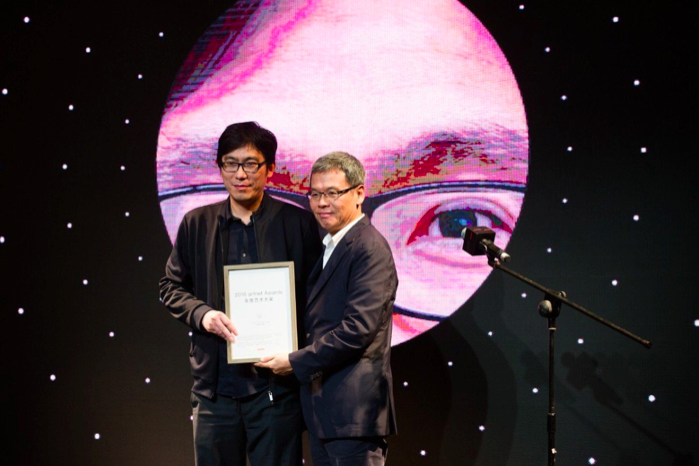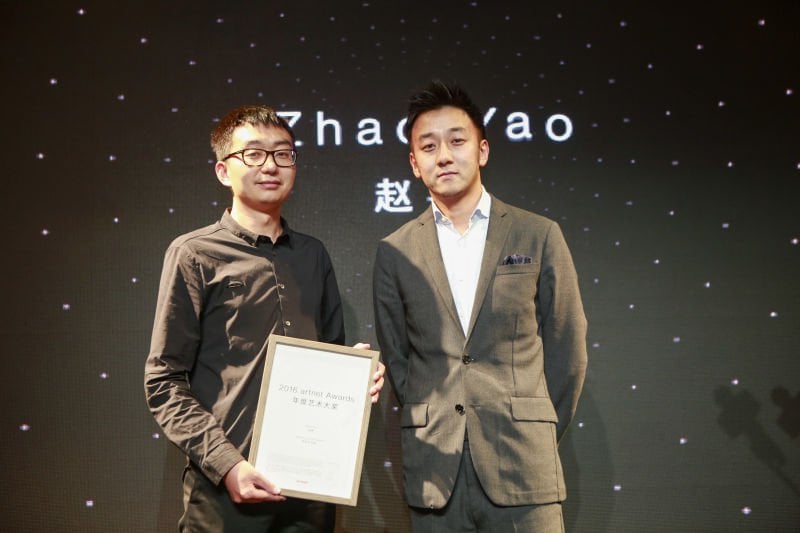Art World
See Pictures From the First artnet Awards Gala x Fosun Foundation Night in Shanghai
The event kicked off Shanghai Art Week.

The event kicked off Shanghai Art Week.

Cathy Fan

On the evening of November 7, nearly 200 influential figures from the art world, including prominent artists, collectors, museum directors, and leaders of cultural institutions gathered at the Fosun Foundation on the Bund (the popular waterfront area) in Shanghai, sharing a memorable night at the 2016 artnet Awards Gala x Fosun Foundation Night.
At the gala, artnet presented the fourth Global Chinese Art Auction Market Report, the most authoritative white paper on the Chinese art market. Seven artists and two galleries received awards during the ceremony, the first awards to be based on a combination of auction data and computer algorithms.
Rozalia Jovanovic, Editor-in-Chief of artnet News, spoke at the gala on behalf of artnet, saying that she has clearly sensed the momentum in the Chinese art scene, and Chinese artists are attracting increasing attention from abroad. As the first dedicated platform for buying, selling, and researching art online, artnet aims to bring more transparency to the art market.
During the ceremony, Jessica Zhang, artnet’s Director of Greater China and Publisher of artnet News China, introduced the fourth edition of the Global Chinese Art Auction Market Report 2015. Co-launched by artnet and the China Association of Auctioneers (CAA), this annual report is the sole one of its kind to publish data from mainland China that is reviewed by a third party organization with knowledge of the art market in China, according to Zhang, and its goal is to build a deeper understanding of the art market. Zhang also noted that artnet hopes this annual report would be helpful for dealers, collectors, and anyone making decisions concerning the art market.

Lu Xun, founder of Sifang Art Museum in Nanjing presented Millennial Artists award to young artist Zhao Yao. Image: Courtesy of artnet.
For the inaugural artnet Annual Awards, artnet worked with the independent research institution YIS to develop in-depth research on artists born in China after 1970. The research is based on open data about exhibition histories of over 2,000 artists collected from public sources such as museums, galleries, biennales, and artists’ websites, and private collections, as well as other data from sources including the artnet Price Database. From there, using a method of social computing (an area of research at the intersection of social behavior and computational systems), artists were assigned points according to a grading system that weighed the significance of a variety of exhibition types (solo exhibitions outweigh group exhibitions; non-profit exhibitions outweigh selling exhibitions, etc.).
“This is the first art award that is based on data,” said Zhang. “It is a bold experiment to establish a new evaluation system, which truthfully and systematically reflects the choices made by the industry. We hope that this award could help people learn more about the art market and encourage the pioneers and innovators to continue boosting the healthy development of the art market.”
The first award presented was Millennial Artists, which is specially established for encouraging and supporting young artists who were born after 1980. In order to compensate for the lack of sales records and evaluation systems for emerging artists, we invited over 20 industry insiders to participate in a poll and give scores to the artists selected by a model based on objective data collected from professional institutions like art museums. Lu Xun, founder of Sifang Art Museum in Nanjing, and Bu Qing from YIS presented this award to artists Zhao Yao and He Xiangyu respectively.
The Galleries of the Year award was based on data collected from those galleries who represent the top 50 artists in the world, and the result is based on the ratio of how many top 50 artists they represent. Beijing Commune and Long March Space were awarded this prize, and Leng Lin and Lu Jie, founders of these two galleries, respectively, received the awards presented by artnet Editor-in-Chief Rozalia Jovanovic.
The five recipients of the Artist of the Year award were Cao Fei, Yang Fudong, Xu Zhen, Liu Wei, and Zheng Guogu, presented by Klaus Biesenbach, Director of MoMA PS1, Philip Tinari, Director of Ullens Center for Contemporary Art, Budi Tek, Director of Yuz Museum, Cai Jinqing, President of Christie’s China, and Katie Guo, representative from Poly Shanghai.
In her speech, Jenny Wang, President of Fosun Foundation, introduced Fosun Foundation as a diverse cultural center that embodies the blend of modernity and tradition that is Shanghai’s signature. Japanese artist Tatsuo Miyajima was commissioned to create a public installation for the art center that was on view the night of the gala.
Situated on the Bund with illuminating lights on both sides of the Huangpu River, the gala officially kicked off Shanghai Art Week, followed by West Bund Art and Design fair, ART021, and the Shanghai Biennale. Many museums and galleries also opened major exhibitions during the week. Guests who were at the gala agreed that the art awards based on data did bring more transparency to the art scene.